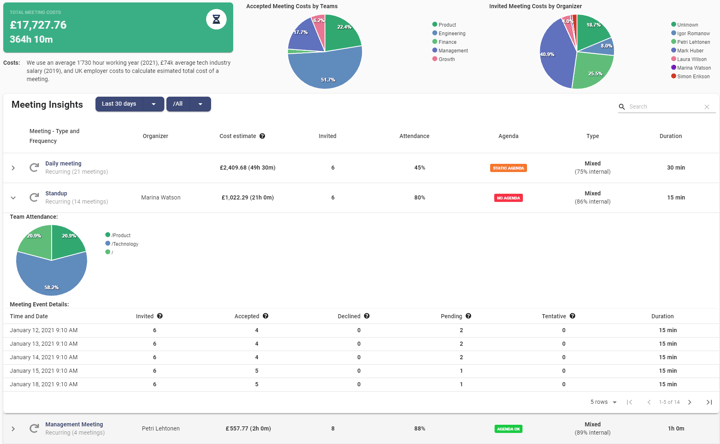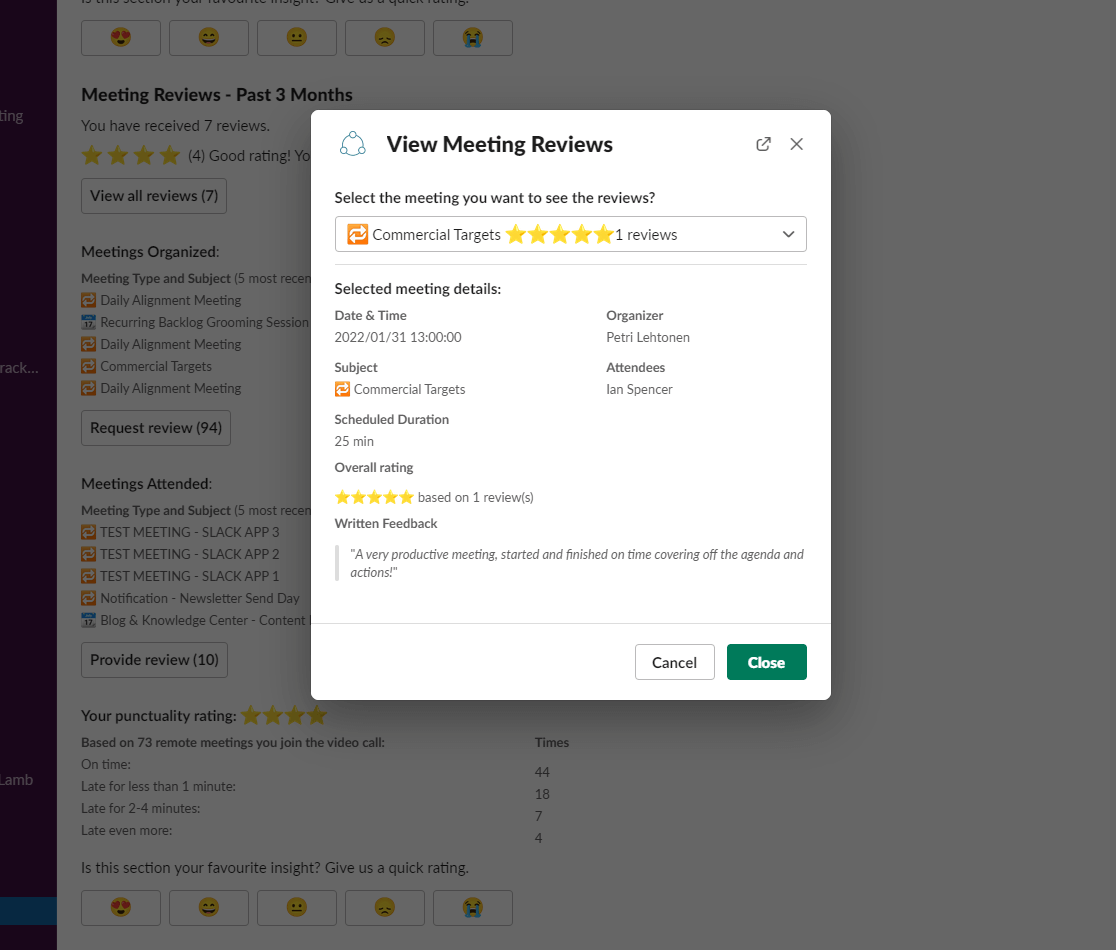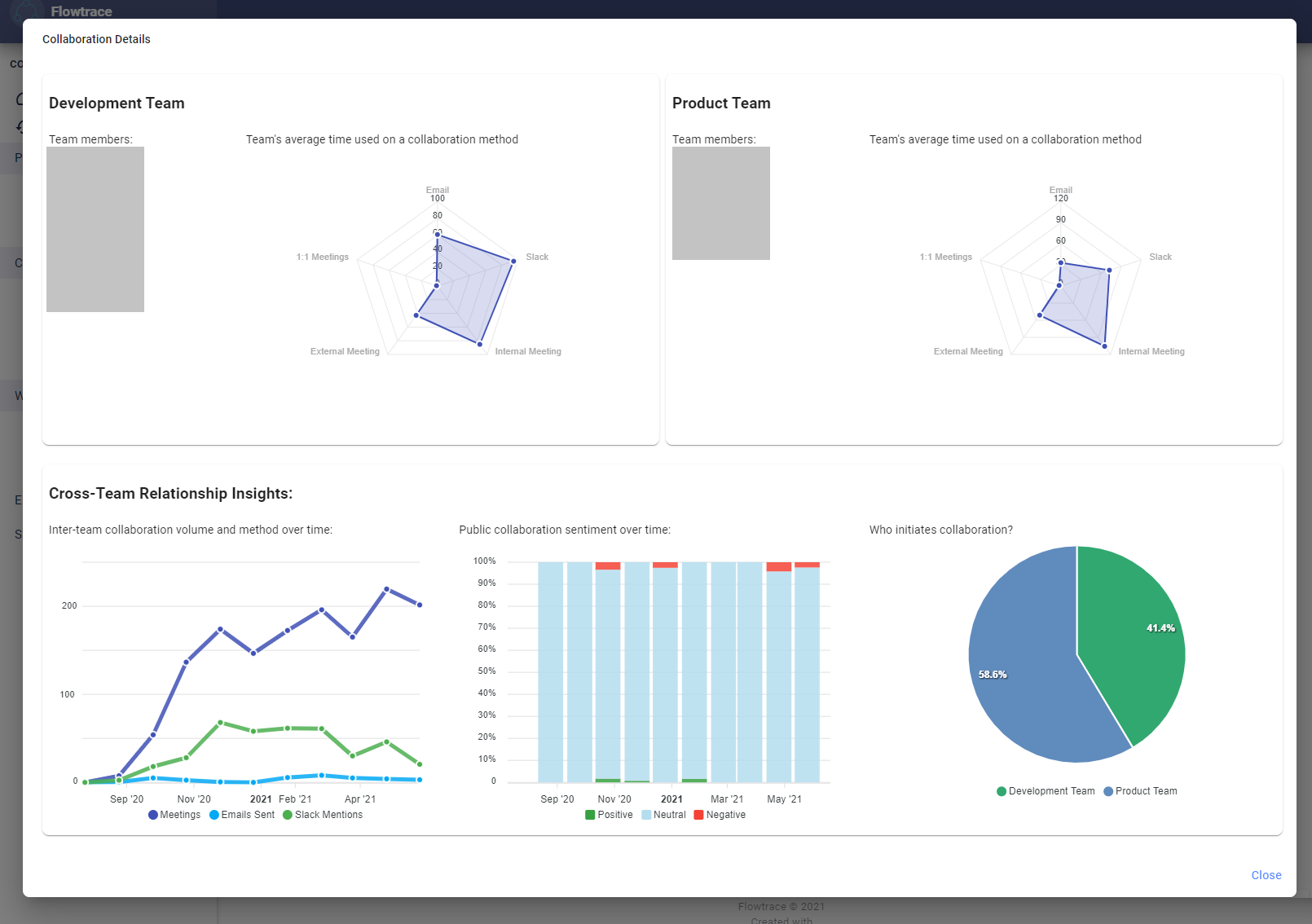Understanding the benefits of calendar analytics can improve many aspects of your company meeting culture. When you understand the key factors that go into a good meeting, you have the ability to improve efficiency, team productivity, reduce time wasted, and even see the cost of late meetings. With the world shifting to hybrid working and remote environments, meeting culture has shifted, and needs to be looked at in new ways, that's why we have outlined the core benefits of calendar analytics.
What are Calendar Analytics & Why Is it Important
Calendar analytics is a set of metrics from company calendars that provide enough value and data to take actionable insights that impact your team and organization as a whole. It will allow you to understand the health of your company meetings, their efficiency, and their effectiveness. Resulting in a drastic improvement in company meeting culture, reducing expenses related to meetings, and streamlining collaboration and productivity across teams. Calendar analytics is part of our meeting culture solution.
The core benefits of analyzing your company's calendar include:
- Discover high-cost / low-efficiency meetings
- Right participants ensure swift decision-making
- Consistent meeting practices across the company
- More productive cross-functional meetings
- More effective decision making
- Improves punctuality and saves money
Benefits of Calendar Analytics

Discover high-cost / low-efficiency meetings
One of the most important benefits of calendar analytics is that it allows you to identify which meetings are costing the company the most money, but yielding the least results based on feedback from its participants. This is important because it allows you to take steps to improve these meetings, or even eliminate them altogether. Doing so can save your company significant amounts of money and make your team more productive.
This would need to correlate with other factors relating to your team's output to present a more complete picture and to determine how effective the meetings are. However, analytics showing lengthy meeting minutes, for example, would indicate low efficiency. Which could be a result of no agenda, too many participants, or lack of meeting control.
Participant feedback and meeting reviews can be an indicator of efficient and effective meetings. When correlated with the money spent, managers can identify which meetings in particular were least effective. This allows for a proactive response to adjusting the way meetings are conducted, allowing for better efficiency and satisfactory results from the meeting. Meeting organizers can understand the areas they are neglecting and what contributes to inefficient meetings.

Right participants ensure swift decision-making
Very few meeting organizers actually take the time to ensure that only the necessary participants and teams are invited to the meeting and everyone gets the opportunity to speak. This leads to unproductive meetings, teams wasting their time, and important points of view being missed. One of the benefits of calendar analytics allows leaders to ensure that only those who need to be invited are, the invites are sent, and attendance is confirmed.
In addition, a FOMO culture will also result in more participants being invited than are necessary. This is where the importance of a structured agenda comes in; by clearly understanding the meeting topics, whoever organizes the meeting can ensure only relevant teams are invited who NEED to be there, and those that need the information can be excluded and emailed with the minutes/updates.
Consistent meeting practices across the company
A key selection criterion for calendar analytics is to create consistent meeting practices across the organization. Using calendar analysis, leaders can understand how many meetings are scheduled, the topics they are covering, the teams involved, how efficient they are, and how much money they cost across the business. This allows for changes where potential meeting culture issues might be present.
Flowtrace provides a holistic overview of meeting metrics that are available to everyone in the organization. With the option to filter to a function and team level allows detailed analysis. This makes improving meeting culture the responsibility of everyone, not just management or meeting organizers.
More productive cross-functional meetings
You can use calendar analytics to improve cross-functional meeting practices by understanding which meetings are taking place, the topics, and the teams involved. This can also identify teams that are lacking agendas for meetings and an imbalance between the meeting organizers. By assessing cross-functional meeting metrics, managers can determine the root causes of ineffective meeting practices amongst teams.

More effective decision-making with agenda
Team productivity is a wider impact than the previous point and yields more effective meetings in general. By structuring meetings with an agenda, inviting the relevant teams, and ensuring meetings follow a structure, will reciprocate the meeting's productivity. This is due to participants having more of an understanding of the content in the meeting, clear direction, feedback channels, and the opportunity to participate.
Improves punctuality and saves money
Using video call and calendar analytics to understand your meetings can help to improve punctuality rates - resulting in saved money and improved efficiency. You can analyze the number of minutes that teams and yourself are late for meetings, then visualize the cost of that to the business. This allows you to make changes to timing, structure, or even location (if not remote) to improve the punctuality rates of the meetings. For example, if 10 people are in a meeting which starts 10 minutes late, that doesn’t cost the company 10 minutes, it costs them 100 minutes.

Conclusion
Companies can use calendar analytics and meeting insights to their advantage by understanding how meetings are conducted, what works well and what doesn’t, and making changes where necessary. This will improve meeting culture, decision-making practices, and team productivity - resulting in a more efficient workplace. Flowtrace utilizes calendar analytics along with other metrics to give you a holistic overview of team productivity, collaboration insights, and meeting culture.
